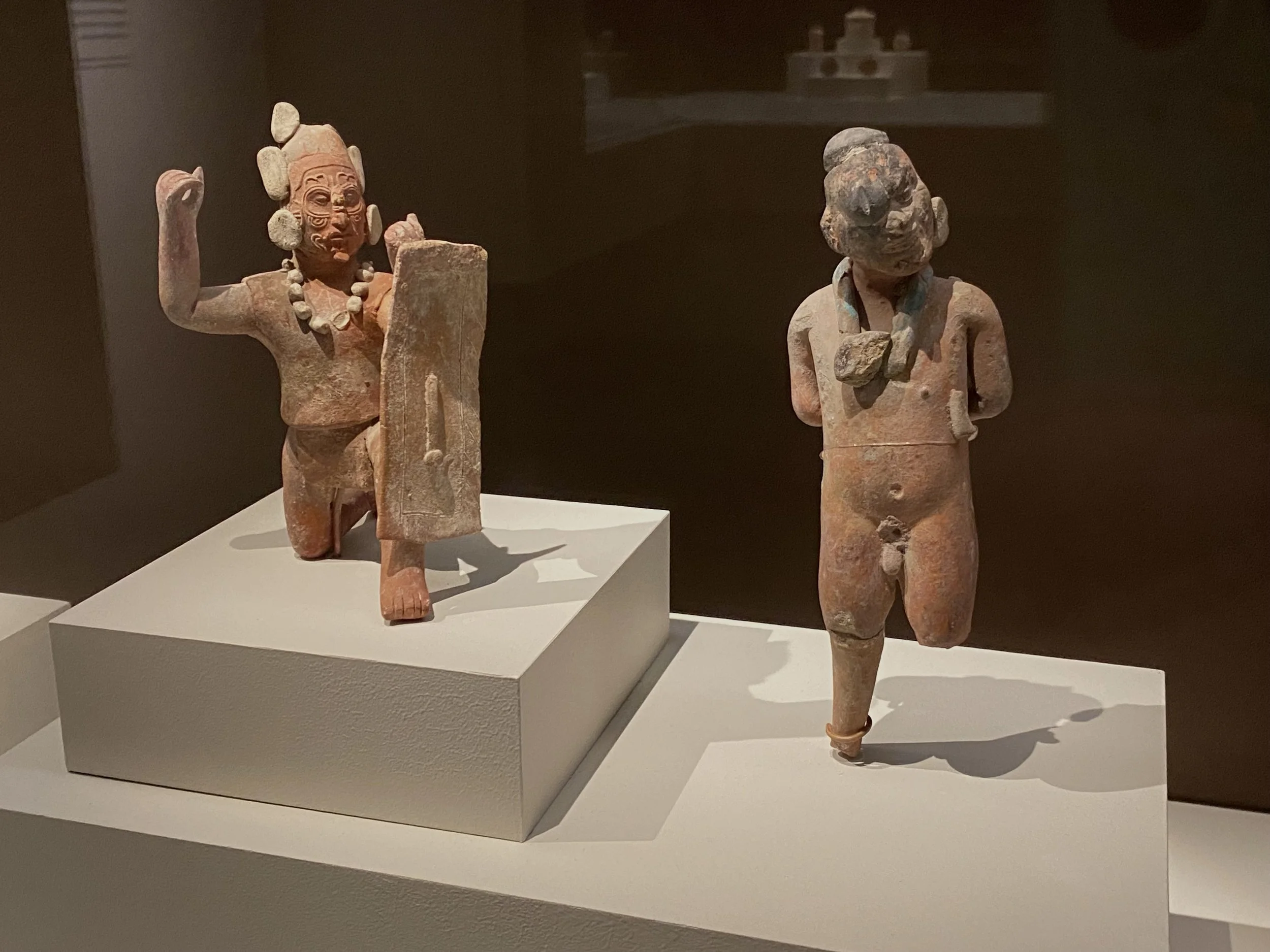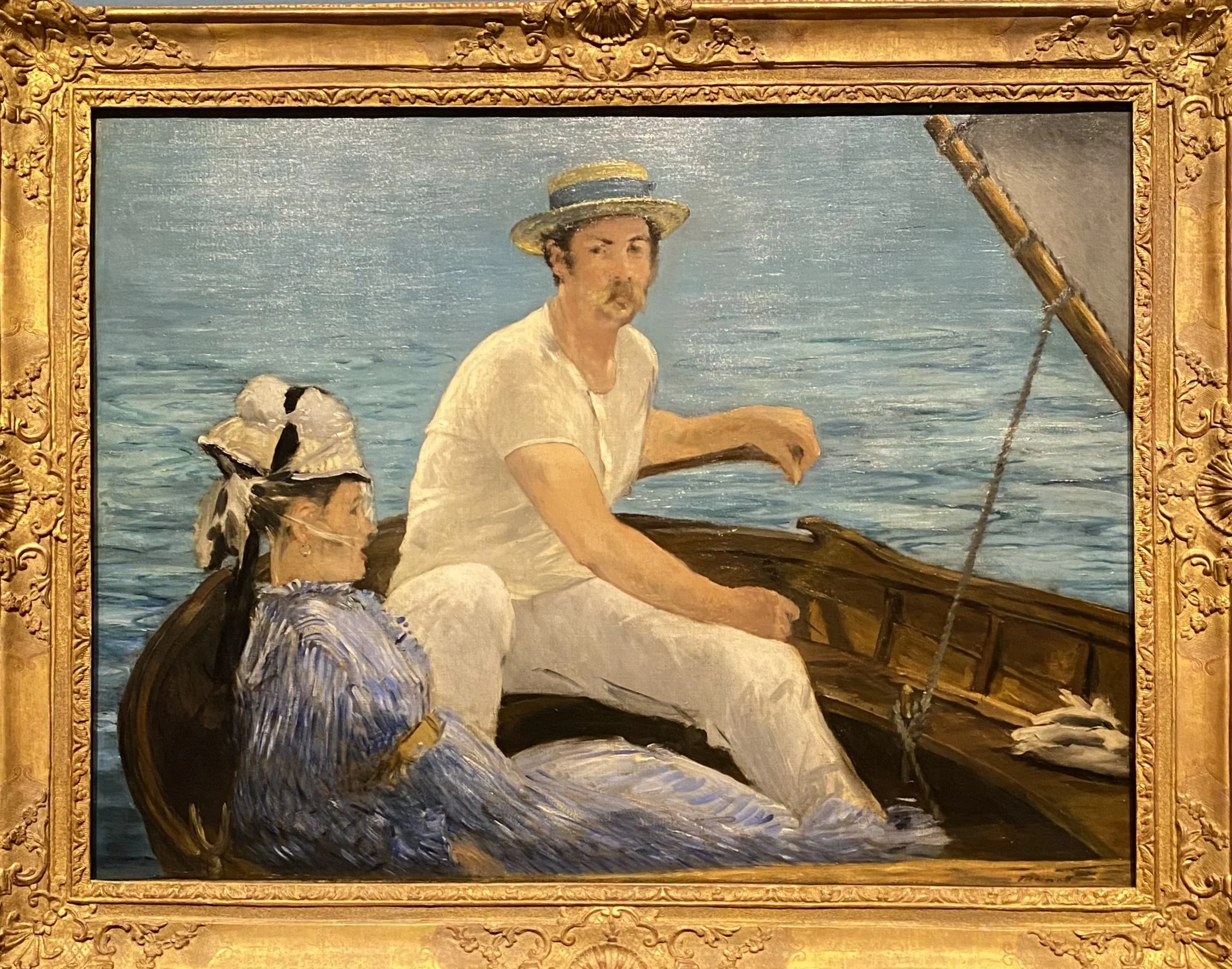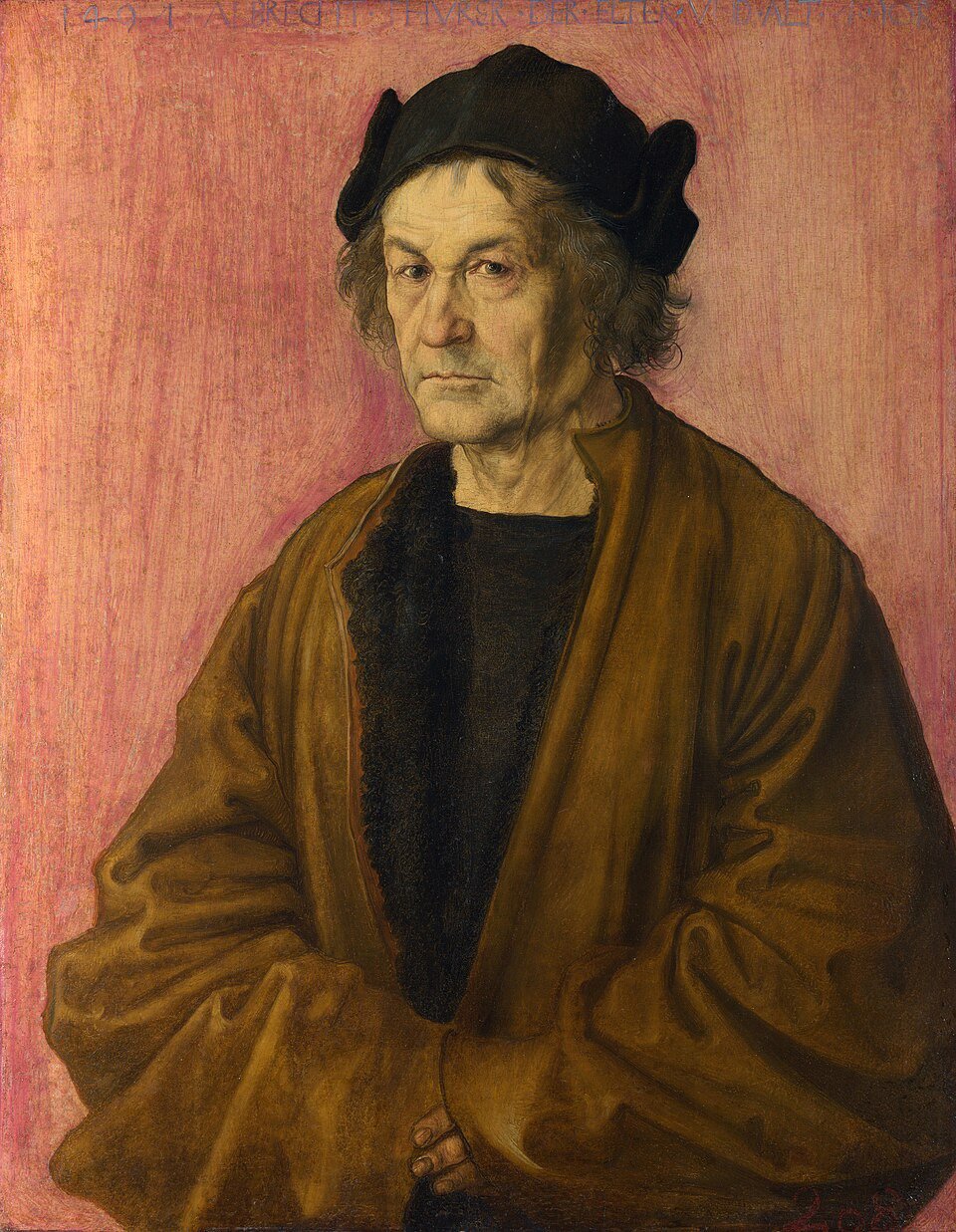Two warriors sculpted and painted with earthen materials tell a story of victory and defeat. On a Sunday while visiiting the newly designed Arts of Indigenous America exhibit my interest was peaked in the gallery of Mayan Art.
The subject of war is ongoing in the art of the world. Awareness of other sculptures that depict the fate of soldiers adds a layer of conversation. For example, the Roman work, Dying Gaul. In an educational video scholars Steven Zucker and Beth Harris note that the Dying Gaul is depicted with a sense of sympathy.
Encountering the Mayan figures I find artistic sympathy in the submission of the bound captive and the noble qualities of the warrior kneeling to face the enemy. The kneeling figure holds a shield. His arm is raised indicating that he held a weapon, a spear most likely. The captive is positioned with his arms behind his back, awaiting what is next, torture according to the curatorial notes and sacrificial death. ‘Poor guy’ is what I think, but I am not a Mayan warrior. The subject of battle with the body as a tool raises images of fleshy vulnerability, life, injury, and heroic courage.
The kneeling figure is in a position of attention. His face is marked with designs. The overall countenance suggests readiness.
The bound figure’s head is tilted. The tilt is familiar in the art of portraiture. Consider the position of the head when circumstances demand action versus reflection—-a tilted head in art is something the viewer experiences—-we look upon the consciousness of an individual. The figures tilted head lends humanity. The position denotes submissive withdrawal. As viewers we sympathize with the character. The genitals are exposed. His face depicts an eye and view to the left, off in the distance it seems. The body is smooth and round with a prominent navel. We cannot know what the artist thought yet we recognize the importance of these details.
Victory and Loss are themes in the pantheon of art subjects. To win, or to lose, is in the storytelling of human history.
By Drew Burgess
Drew Burgess is an art instructor at the College of Alameda of the Peralta Community College District of California.
Works Cited:
Dr. Steven Zucker and Dr. Beth Harris, "Dying Gaul and Ludovisi Gaul," in Smarthistory, November 18, 2015, accessed December 1, 2025, https://smarthistory.org/dying-gaul/.
Cite this Page: Drew Burgess, “Kneeling and Captured Mayan Warriors at the de Young”, December 6, 2025, https://www.drewburgess.art/museum-visits/2025/12/1/kneeling-and-captured-warriors-at-the-de-young
Kneeling Warrior and Captured Warrior, 650-850 CE, Mexico or Guatemala, Maya, Earthenware and pigment, FAMSF, M.H. de Young Memorial Museum, San Francisco, California












































